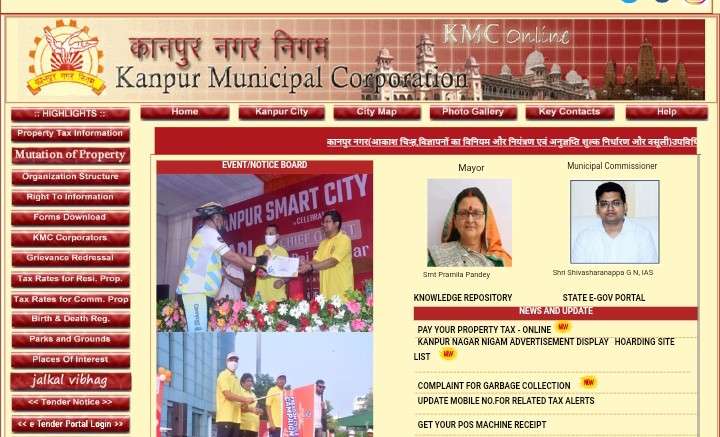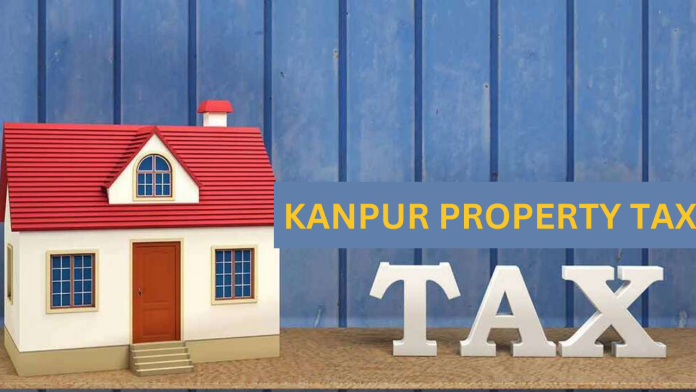In the realm of civic responsibilities, the Kanpur Property Tax stands as a crucial levy imposed by the Kanpur Municipal Corporation (KMC) on properties nestled within its jurisdictional boundaries. Let’s delve deeper into this fiscal obligation and uncover essential insights for property owners.
1. Unraveling Kanpur Property Tax Essentials
Grasping the Concept
Kanpur Property Tax, an annual imposition, blankets residential, commercial, and industrial estates, anchoring itself on parameters like area, location, and usage. These levies fortify KMC’s coffers, channeling funds towards manifold civic amenities and infrastructural upliftments.
Calculating Tax Liabilities
Property tax obligations are pegged to the property’s annual value, meticulously calculated by KMC. Factors such as property age, condition, location, and prevailing market dynamics form the bedrock for tax assessment. Tax rates, set and revisited by KMC intermittently, dictate the financial dues.
2. Navigating Payment Procedures
Timely Payments: A Prerequisite
Adherence to stipulated deadlines is imperative to sidestep penalties and legal entanglements. KMC extends a gamut of payment avenues, embracing online portals, banking conduits, and designated centers, fostering convenience for property owners.
Due Dates, Penalties, and Rebates
Due Dates
March 31st marks the annual rendezvous for property tax payments in Kanpur. Property proprietors can seamlessly execute payments through online channels or traditional offline avenues.
Penalties
Failure to honor payment deadlines triggers a punitive levy, escalating at a rate of 10% per annum on the overdue amount. Monthly increments compound this penalty until the dues find settlement.
Rebates
Embracing punctuality reaps rewards in the form of a 10% rebate for those clearing their annual tax dues in a single installment before March 31st. Special concessions extend to seniors and differently-abled individuals upon furnishing the requisite documentation. Additionally, eco-conscious endeavors like rainwater harvesting earn a 5% tax reprieve spanning three years.
3. Ensuring Compliance: Documentation Prerequisites

Essential Documents
The documentation landscape varies across payment modes. While online transactions mandate the Property Identification Number (PIN), offline counterparts necessitate identification proofs alongside a printed payment receipt.
4. Streamlining Online Payments
Seamless Transactions Unveiled
Embark on a hassle-free journey towards tax settlement through online portals. Here’s a succinct roadmap:
- Website Navigation: Visit the official Kanpur Municipal website.
- Accessing Tax Information: Navigate to the Property Tax Information section.
- Payment Initiation: Opt for the ‘Pay Your Property Tax Online’ option.
- Data Input: Furnish requisite property details.
- Payment Execution: Choose from an array of payment modalities and execute the transaction.
- Acknowledgment: Procure the payment receipt post-transaction.
Also Read: Karnataka Property tax 2024: Pay Tax Online With Karnataka One Portal
5. Unveiling Offline Payment Modalities
Traditional Avenues Explored
For those inclined towards conventional payment mechanisms, a visit to the Kanpur Nagar Nigam municipal office suffices:
- Visit Schedule: Monday to Saturday, between 10 am to 5 pm.
- Document Submission: Present the current bill along with identification proofs.
- Form Submission: Duly fill out the Kanpur property tax form with mandated details.
- Payment Execution: After form verification, settle dues through cash or Demand Draft (DD).
- Receipt Procurement: Obtain the property tax receipt post-payment.
6. Embracing Transparency: Monitoring Payment Status
Dual Avenues for Status Verification
- Online Verification: Access your payment status online via the official website, leveraging the ‘Download Receipt’ feature.
- Offline Validation: For payments made offline, procure a payment confirmation slip from designated officials.
7. Decoding Tax Calculations
Unraveling the Arithmetic
Kanpur property tax computations hinge on multifarious variables like land value, occupancy, property type, age, and construction specifics. The arithmetic nuances span two methodologies:
- Built-up Area Approach: Delving into property specifics to derive tax obligations.
- Annual Rental Value Model: Anchoring calculations on rental dynamics and property characteristics.
8. Final Verdict
In a digital epoch, Kanpur’s property tax landscape stands ripe for exploration. Seamless online interfaces and structured payment modalities epitomize KMC’s commitment to citizen-centric governance. Armed with comprehensive insights, property owners can navigate tax obligations with aplomb, underscoring fiscal prudence and regulatory compliance.
Frequently Asked Questions (FAQ’s)
Ans: Kanpur Property Tax is an annual levy imposed by the Kanpur Municipal Corporation (KMC) on properties situated within its jurisdictional boundaries. It serves as a crucial source of revenue for funding civic amenities and infrastructural developments in the city.
Ans: Kanpur Property Tax computations rely on two primary methodologies: the Built-up Area Approach and the Annual Rental Value Model.








































